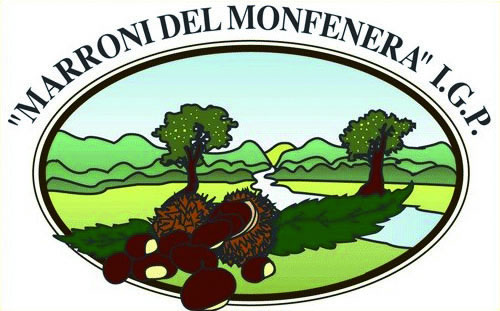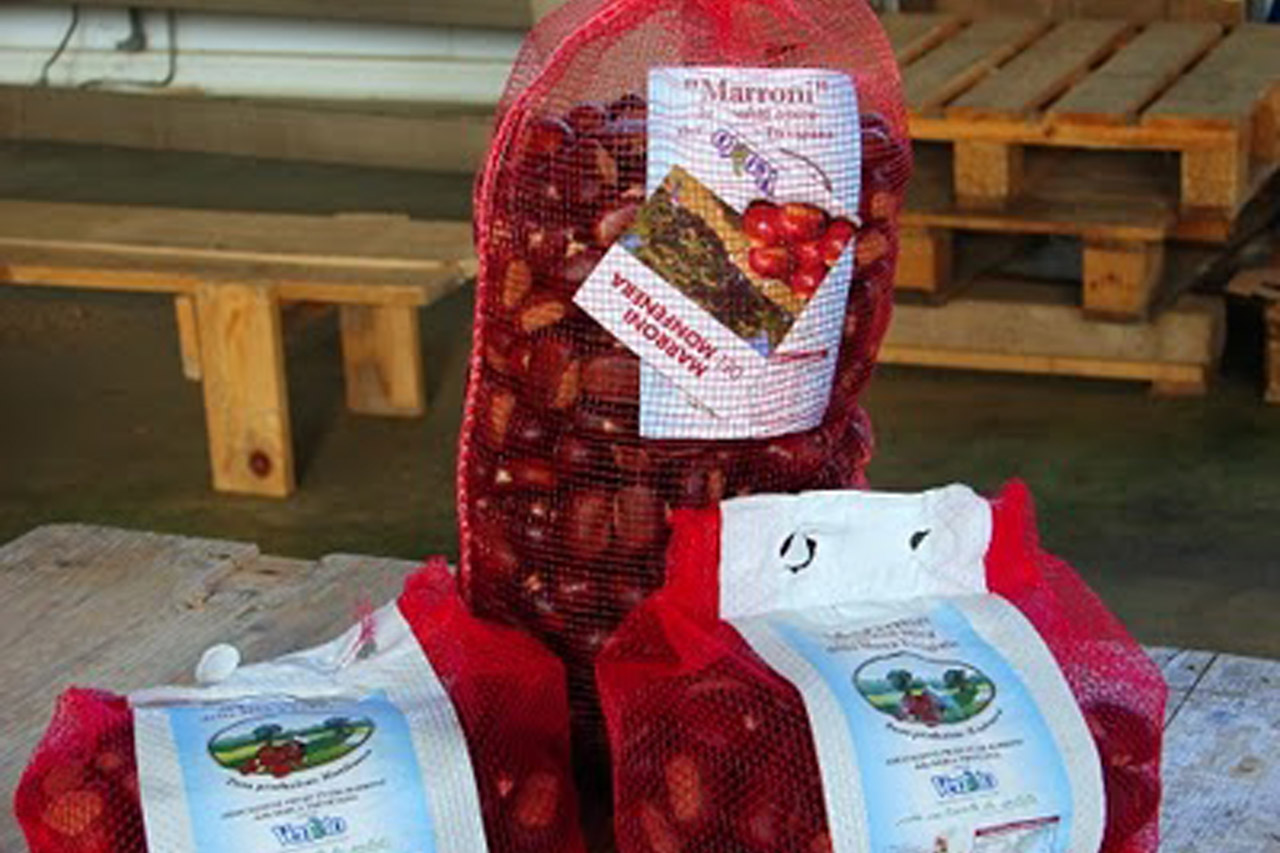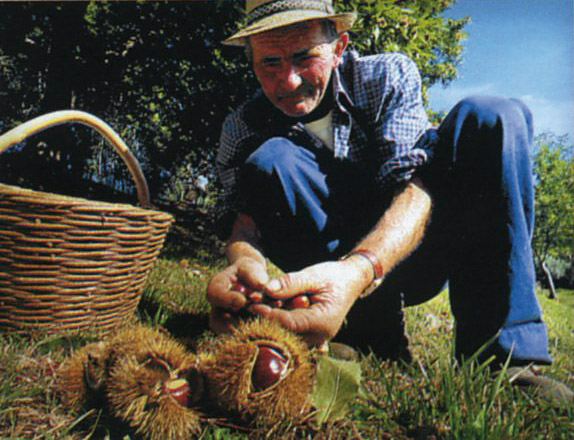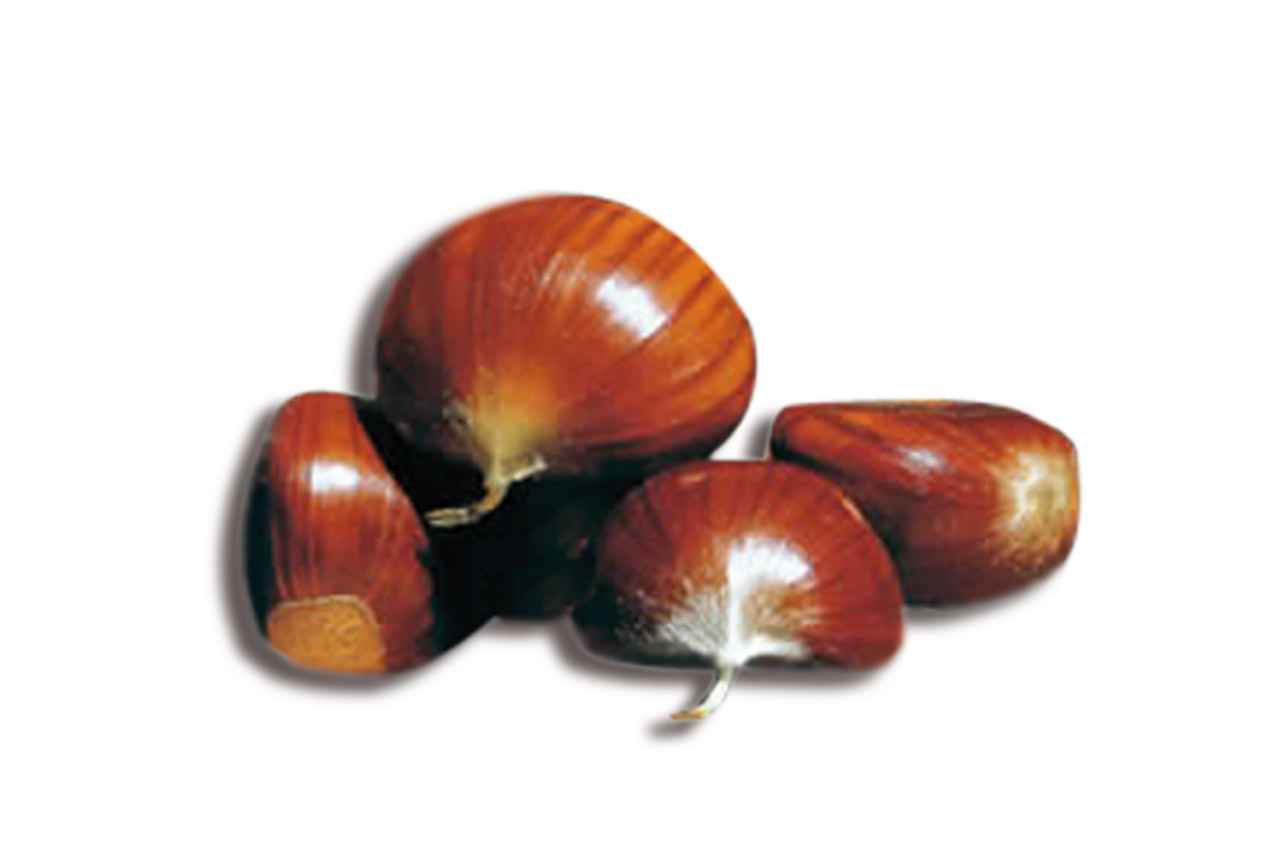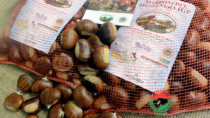Description
Marroni del Monfenera PGI are fresh chestnuts belonging to the Castanea sativa Miller species, deriving from the local chestnut ecotype.
Production Area
The production area of Marroni del Monfenera PGI is within several municipal areas in the Province of Treviso, in the Veneto region.
Production Method
The chestnut tree does not need any kind of chemical or pesticide treatment. Once ripe – from mid-September to mid-November, depending on its precocity – the fruits are harvested with the bacchiatura method, which consists of beating the branches of the tree with long cane poles to make the cupules fall. The harvested chestnuts are selected by hand, cleaned and weighed. If these products are not sold within 48 hours from harvesting, they must undergo the “curatura” or “novena”, process, a method with ancient origins that guarantees the naturalness of the product: within a few hours of harvesting, the fruits are immersed in water at room-temperature for a maximum of nine days, changing the water every two days, after which they are dried in suitable machines. After dipping, the raw fruits can be conserved for a maximum of three months.
Appearance and Flavour
Marroni del Monfenera PGI are for the most part ovoid and bright brown with dark streaks. The flesh has a hazelnut-brown tone tending to straw-yellow, with a pasty-floury texture and a very sweet flavour.
History
The history of the cultivation of Marroni del Monfenera PGI dates back to the Middle Ages; this is confirmed by a public statute dated 1351. Furthermore, the care and protection of chestnut groves is confirmed by notary acts from the same and later periods, which oppose the abusive cutting down of chestnut groves and reported the presence, out of season, of pasture-raised livestock that could compromise the chestnut harvest. In the first half of the 19th century, during the Hapsburg domination, chestnut cultivation enjoyed its most important historic period, arousing great interest. Since the mid-1980s, chestnut cultivation has shown a positive trend, with cultivations returning throughout the territory of the Pedemontana del Grappa and Montello regions; this new interest was also thanks to the presence of several events based around the chestnut. The most important of these is the Marroni del Monfenera fair, which was inaugurated in 1970 and exists still today, aimed at promoting and spreading the knowledge of this ancient product.
Gastronomy
Marroni del Monfenera PGI must be kept in a dry and well-ventilated place. In addition to traditional roast chestnuts, these fruits can also be used to prepare many recipes, from first courses to desserts. They are very good simply boiled or transformed into flours or sauces. When boiled and mashed, they are an ideal ingredient for making biscuits – with rum and eggs, sprinkled with almonds or sugar – or puddings and soufflés.
Marketing
The product is marketed as Marroni del Monfenera PGI. The commercial categories are: Extra (calliper exceeding 3 cm), First (calliper between 2.8 and 3 cm), and Second (calliper between 2.6 and 2.8 cm). It is on the market from September 15th of each year and is sold in different-sized food net bags or food containers made of different materials, with weights of 0.5, 1,2,3,5,10 and 25 kg. The product is also available transformed, such as Caldarroste di Marroni del Monfenera PGI, aromatised with white wine.
Distinctive Features
The production area boasts extremely good pedoclimatic conditions, which are ideal for chestnut cultivation. A few spring frosts and a heavy annual average rainfall gives the soil the right level of acidity: these features are fundamental for obtaining the distinctive qualities of Marroni del Monfenera PGI.



